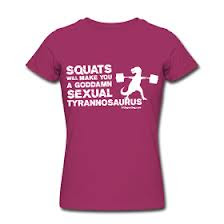The gym bag should be an integral component of any serious lifters arsenal. With a gym bag, you can ensure that every training session you participate in is as uniform as possible. Having all of your own gear with you for every lift means that you are always prepared. You don't want to be the person who is uncomfortable during a lift because they are missing something that they are used to having with them.
My gym bag is pretty solid; I've currently got just about everything I need to make sure that regardless of where I'm lifting or who I'm with I can have the most optimal training session possible. Here's a peek at the contents of my bag.
I carry a pretty standard sized
Under Armour duffel bag. They don't sell the model I have any more, but the new ones can't be that different. This bag is never emptied out and stays packed with this stuff all of the time.
This is everything laid out on my bed. Not everything in here gets used during every lift, but these are all things that I wouldn't want to not have available to me. If the gym I'm lifting at has some of these things, then I wouldn't use my own. Better to have it and not need it then need it and not have it!
Let's go through each different compartment of the bag.
This is the stuff from the little outside net-portion of the bag. Gum, Ipod and nail clippers. If I'm lifting in a regular commercial gym then I'll probably need the Ipod. I love chewing gum when I'm lifting, and having a long nail or a hang nail while you're training is really annoying.
The long side pocket is where I keep my larabars! I love these things. If my energy is a little down pre-workout then I can inhale one of these. Post-workout carbs are important so I'll often have one with my shake. If someone I'm training with hasn't eaten enough, one of these will help them get through the rest of the workout. They are pretty good for you and only have a few ingredients in each flavor. Apple Pie is currently my favorite, but I just had the Banana Bread one for the first time and it was
insanely good.
This is the stuff that goes into the big side pocket on the bag; this is some of the good shit. I have a couple packets of random trail mix (cashews, almonds, dried cranberries) that serve the same purpose as the larabars. My jump rope lives in here, because it's one of the best ways to get your body temp up before you lift. I have a bag of chalk and that's where my lifting straps live (chalky straps are the best). Sports tape helps protect your thumb from the constant discomfort of the hook-grip.
Java Stim is like a cup of coffee in a convenient pill form, in case you didn't leave yourself enough time to grab your pre-workout cup of joe (very important). Lastly, I carry a pack of ammonia inhalants just in case. You never know when you'll need a little neural wake-up.
Now, for the big stuff. The stuff located in the main compartment of the bag is probably the most important stuff to me. On the bottom of the picture is a mini-band from EliteFTS. This band serves a lot of purposes in terms of warm-ups. It's good to have in case the gym I'm at doesn't have any available. You can use it for shoulder warm-ups, core activation and glute/hip activation stuff. Right above that is my lacrosse ball and peanut; two must-haves for rolling out and getting the kinks out. The black roll above that is my
VooDoo Floss Band which I admittedly still haven't used.
To the left of that is my shaker bottle, which is self explanatory. Good for water and protein. To the left of that is my workout journal, containing all of my workouts for the past few months. If you don't have one of these, get one!
Directly above those are my new
Rehband Knee Sleeves that I got for Christmas (thanks momma!); these do an amazing job of keeping my knees warm while I lift, which makes everything just way more comfortable. To the right of the knee sleeves are my
weightlifting shoes. They have a wooden sole with a wedge heel that provides me with incredible stability and some added range of motion during squats and Olympic lifts. I love these shoes and they've proven to be one of my best purchases. They will last me for a very long time. Next to the shoes is my
lifting belt from EliteFTS. I don't use belts often, but when I do, I want to be comfortable with it. It's also a pain in the ass if 3-4 guys are all using a belt and have to pass one between all of them. Lastly are my
wrist wraps; these help protect my wrists during Olympic lifts and pressing. I also wear them during front squats. These last four items can add up, but they are all quality products that last a long time. My father taught me that it's better to buy nice, not twice. Spend the money up-front on good gear and it will last you a lifetime.
Well, that's just a little peek into the stuff that I use on a daily basis when I lift. I like my training sessions to be as uniform as possible so that I can eliminate as many variables as possible. I accidentally put someone else's wrist wraps on a week ago and it felt like I was wearing someone else's underwear; just very uncomfortable and unfamiliar.
Anything that I'm missing that I need to add to my bag? Let me know! Have a great day and go lift some heavy shit!


























